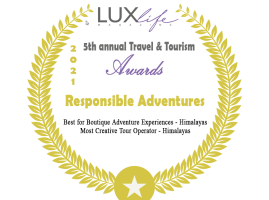Annapurna Poonhill Trek during the spring season
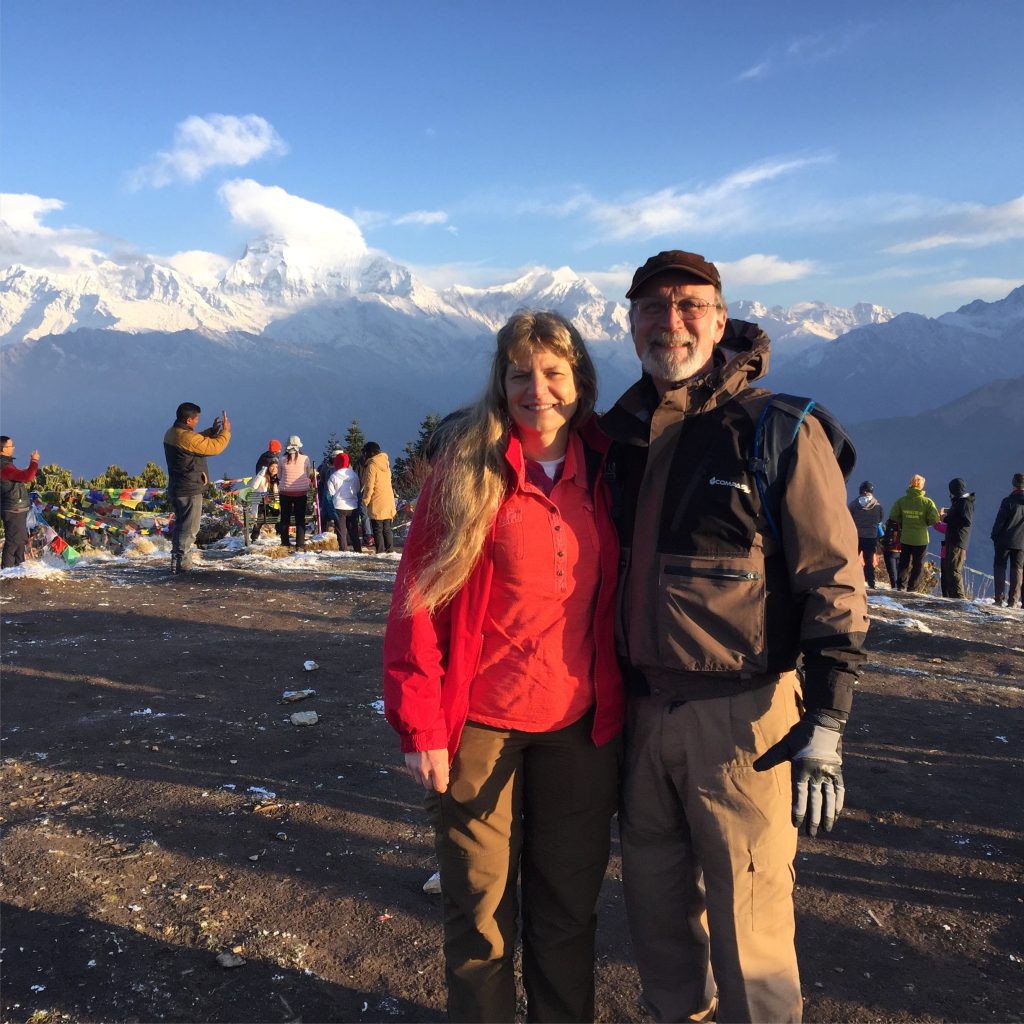
Annapurna Poonhill Trek during the spring season Ghorepani Poonhill Trek during the spring season. Kay and Paul started corresponding with us with their requests to visit museums and architectural monuments of Kathmandu, which they are very passionate about, before heading out on their tailor-made trek during their nine-day visit to Nepal. They had a hectic start to their first couple of days of the trip as we had to squeeze in as many World Heritage sites as possible on the afternoon they arrived and the following day before flying off to Pokhara in west Nepal; then driving to the starting point of the trek and hiking for an hour on day two. Day One, Kathmandu arrival and sightseeing. Their flight landed with a slight delay as it has become a norm at Tribhuvan international airport in Kathmandu due to the weather and air traffic. I met them, brought them to the hotel to check in, have a quick bite, and go sightseeing in the afternoon after withdrawing money from an ATM. Day two: Morning tour and onward to Pokhara. They went on the sightseeing tour the following day as planned, and they had an early lunch before there were dropped off at the domestic airport, where I met them and checked into the domestic terminal. We found out the flight had been delayed by two hours due to the morning foggy weather and air traffic upon asking the airline’s desk. We went through the usual security procedures, went to the departure lounge, and waited for our flight to be announced. We went to the bus, which drove us to the aircraft and waited to take off when the pilots were informed of heavy rain in Pokhara. We were told the flight was cancelled as it was getting late in the afternoon, and the torrential rain did not appear like it was going to subside anytime soon. After a quick discussion, the Thomsons agreed to my suggestion of not wasting time waiting another day to fly; instead, they hired a vehicle and started driving as soon as possible. We started on our overland journey after collecting our luggage at 5 pm. Pokhara is 200km to the west and takes 6-7 hours of safe driving on the winding mountain highway. We stopped at a small town called Damauli at 9 pm, checked into a small hotel, had a quick dinner, and retired as we had a 6.30 am start the following day. Day three: Starting the trek. We met at the reception, loaded our luggage onto the jeep, and started our road journey with a short stop for breakfast on the highway. We picked up our support team members at Pokhara after 90 minutes and had three more hours of driving before starting our trek. We went to cover our lost time and to be back on schedule. So it is possible these days with the growing road network in the Annapurna area. We dropped off at Tirkhedhunga and walked for about twenty minutes before stopping for our pre-ordered lunch. After that, we had a pretty steep ascend on steps for two hours to Ulleri. Paul found it difficult with the temperatures around the low twenties Celsius, coming from Wyoming, where it was still around zero degrees. We had been hiking towards Banthanti from Ulleri when we got caught in a hailstorm. We had just found shelter in a tea shop when it started hailing heavily. The golf ball-sized made loud banging noise when it hit the tin roofs. Pretty soon, the path and fields were white with the hailstones. It stopped after 30 minutes of the inundant hail storm. We reached Banthanti in twenty minutes; it was the stop for the night. Day four: Ghorepani 2850 m. We started our hike after breakfast amidst the oak and Rhododendron forest with soothing sounds of flowing streams. We stopped for many photos to absorb the surroundings as it was a short 3-4 hours of hiking. We had planned to go up to Poonhill 3210 meters if the weather was good so we could enjoy the sunset. It also meant that we did not have to get up in the dark to go up Poonhill for sunrise and avoid the crowd. The clouds started building up quickly this morning, and we hoped to arrive at Ghorepani before it began to rain/hail, which we did. We had a relaxing afternoon as the weather was very cloudy. We had lunch and walked around the village. We played a few card games with Ram, our porter, and Chandra, our trekking chef; this also helped bring the team and trekkers closer to each other with a few laughs. Unfortunately, it started to rain and hail from around 2 pm onwards. We hoped the downpour would clear the clouds for our sunrise the following morning. Day five: Poonhill and on to Tadapani. We woke up and left Poonhill at 4.40 am, as it takes an hour to ascend in time for the sunrise. We got to Poonhill at the right time, and it was crowded as expected, with several hundred trekkers. We each had a mug of hot chocolate to celebrate the magnificent Panorama of the Dhaulagiri, Annapurna, and Manaslu ranges. Then, we did the usual photography, admiring the views, and headed back to Ghorepani for our breakfast, as we had five more hours of hiking that day. Our hike to Tadapani, our next stop for the day, began with a climb to Deurali, a similar altitude as Poonhill at 3210 m. There is only a single teashop between Ghorepani and Deurali (Pass in Nepali. Hence, several thousand Deuralis on Nepal maps). We stopped at Deurali for some hot drinks as it had been two hours since leaving Ghorepani. To save time, we gave our lunch order to Chandra and Ram to go ahead of us and order the food to save time. We knew the weather pattern by now and wanted to avoid getting rained/hailed during
Ghantakarna Chaturdasi Festival of Nepal
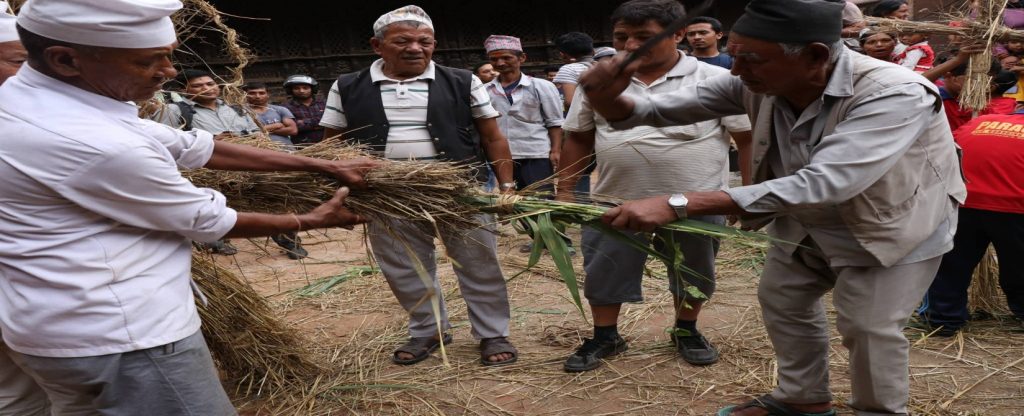
Ghantakarna Chaturdasi Festival of Nepal This festival is generally celebrated in July/August. However, this year it was on the 30th of July 2019. Since the beginning, people have given ‘peace’ offerings and sacrifices to demons, serpents, supernatural beings, and natural elements such as water, fire, and the wind. Legend has it that a demon named Ghantakarna was a notorious demon who was known to spread havoc amongst the people. Therefore, this festival is to remember and celebrate the end of Ghantakarna. Effigies of the demon are erected at the crossroads of all the streets. People place pots of cooked rice at all intersections for the beast. A man coloured in black and blue paint all over his body goes around begging for money. The demon’s effigy is dragged to a nearby river to get rid of the painted man sitting on it. People offer the model of demon meat and other food today; people also wear metal rings known as Gathemangal ko aunthi (Gathemang’s c. It is believed that this ring safeguards people from all evil spirits. In addition, the locals hammer three-pointed nails onto the doorposts to keep the evil at bay before nightfall. As usual, several legends and myths are connected to this demon, Ghantakarna, which is part revered and part feared. The children make the effigies of Ghantakarna out of bamboo, tree branches, and dried corn stalks. The children collect money from passersby in the name of Ghantakarna. The children shout and call those who refuse to give money, “look at the grandson of Ganthe Mangal; he is coming!” This day also marks the beginning of the month-long Lakhe Naach (Mask dance) In the past, when water scarcity or thunderstorms brought illnesses such as gastrointestinal problems, common during the monsoon period, people believed that evil spirits were behind the diseases. They found that evil spirits could cause these diseases because of the absence of The Nine Durgas (Nava Durga). People do these things on this day. Cleaning of the houses Enacting the mythical drama in the streets Make effigies denoting Ghantakarna and place them at the crossroads of every main street. Girls hang their hand-made dolls on this effigy to protect themselves from evil spirits. People wear a wrought iron ring on their fingers and ornaments made of silver or gold on their children’s wrists and ankles. Girls apply henna to their palms. Groups of boys roam, asking for alms shouting ‘Aaju Jaya Haa, Om Shanti Jaya Nepal.’ The collected money was used for the ritual works for their deceased family members in the past. Locals gather to erect the effigy, and a monster-like drawing is painted on it. ‘Aaju Jaya,’ the one who impersonates Ghantakarna by smearing himself with paint, is served beaten rice with curd under the puppet. ‘Aaju Jaya’ is then made to wander the streets with a burning torch made out of the husk and begging for alms. The man goes around the effigy three times. Finally, everyone volunteers to drag Ghantakarna to a nearby river. However, during the process, ‘Aaju’ escapes from the way. Even though no recorded history is available of when this festival started, it is believed that it began during the Lichhavi period during the reign of the Gopala Bansha (the cowherds). Once again, there are several versions of this festival. A slightly different version of this folklore is; A demon called Ghantakarna, who wore a pair of bells as earrings, terrifies the people and kills them. The meaning of his name was Ghanta (bell), Karna (ears) When all attempts to kill the demon failed, a wise frog was successful in executing this demon. The frog lured the demon into a swamp, trapped him while out hunting, and managed to kill the monster. It is said that this day of the new moon marks the celebration of the Ghantakarna Festival. This is why the Newar community worships the frog on this day. There is also a slight confusion/controversy about whether Ghantakarna was a demon or a deity. The Hindus worship Ghantakarna as a devotee of Lord Shiva, while the Buddhists consider him a form of Bhairav. Check out our Trekking packages for Nepal, Bhutan, India, and Tibet.
Gai Jatra Festival of Nepal
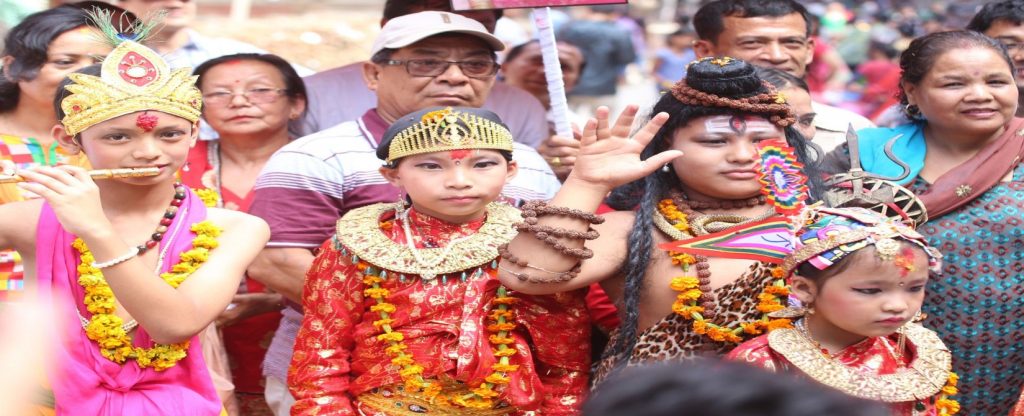
Gai Jatra festival of Nepal 23rd August 2021 11th August 2020 19th August 2019 Most festivals in Nepal have turned into a coersion today. However, in specific cases, it has become a burden financially and time-wise due to the dilution of the sources and concealed reasons. The Gai Jatra (Sa Paro in Newari), or the cow festival, is one such event that is more appropriate these days than ever. It is a festival that helps family members cope with the death of a near and dear one. It is an essential factor in helping with the healing process. Every town within and outside the Kathmandu valley celebrates this festival differently. History has taught us that King Pratap Malla, the ruler of Kathmandu from 1641 – 1674 AD, began the festival to heal his wife’s grief after the demise of their son. The long parade concept was to help her recognize that many families in the city had also lost a loved one the same year. He believed that this experience would lessen her grief a little. He then is supposed to have announced a reward to anyone who could bring a smile to his wife’s face when the parade could not help. To achieve this, he granted complete ‘freedom of speech during this festival—the public dressed in ridiculous attire and makeup and performed satirical performances. Then, seeing the queen smile, he began to pay them to perform in front of their houses as well. The queen then voiced her request to bathe in numerous confluences of rivers in the region. King Pratap Malla was again faced with the challenge of fulfilling her wish. The king, renowned as an innovator, had Rani Pokhari (Queen’s pond) constructed, filled with water from all the holy sites she yearned to visit. Today when you drive into the heart of Kathmandu city, you will notice a dry pond under construction after the 2015 earthquake. During the Gai Jatra festival, families where death has occurred will bring a cow or dress up young boys as cows and parade in Kathmandu’s streets. It is believed that the deceased will make it to the gates of paradise safely by holding on to the cow’s tail. In the old days, one could get a sense of the number of deaths that had taken place in that particular year among the Newar community by counting the number of participants. Moreover, the parade was a simple way to keep consensus and begin healing the deep sorrow caused by any form of death of the bereaved families. The satire with the complete ‘freedom of speech, where no one is spared, helps speed up the healing process. Cartoons, comic books, cross-dressing, mimicry, poetry, street theatre, speeches; you name it, and you will be able to enjoy all of these and more both on the streets and stages (dabali). There will be music and feasting everywhere. Recently, the public has complained that some of the presented materials are of poor taste and downright vulgar. This festival is a great outlet to release resentment, annoyance, and dissatisfaction while making fun of those whom you usually would not be permitted to be ridiculed. Traditionally the parade walked past the palaces of the old Malla period in the valley. The parade marches past Birendra International Convention centre (BICC), where the reinstated parliament meets. The politicians need to be reminded of the corruption and inconveniences that the Nepalese must bear and make sure the politicians are reminded that the public sees everything. There is a similar story that prevails from the time of the Buddha. When the Buddha was going around giving Dhamma lessons, a woman named Krishna Gautami approached him, carrying a dead child and wailing. She insisted that her child be brought back to life if he was as great as people claimed. So the Buddha gently asked the woman to get some mustard seeds from a house where no deaths had occurred so that he could sprinkle the seeds on the child to bring them back to life. The woman happily agreed and began searching for seeds from a household where no one had died. She went from house to house only to be told sad tales of death in every home. Finally, the woman realized the futility of her efforts as the way went on to understand that death is inevitable, and every family experiences it. Hence her healing process began. Check out our Trekking packages for Nepal, Bhutan, India, and Tibet.
First Experience of Trekking In The Himalayas
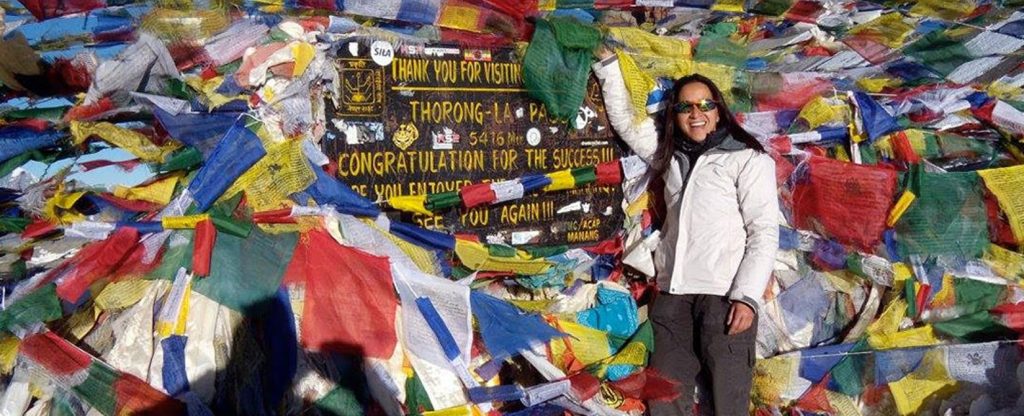
First Experience of Trekking In The Himalayas My first trekking experience was in the Nepal Himalayas. Annapurna Circuit Trek November/December 2014 A month before my fortieth birthday, I undertook my first trek, having never done anything like it or similar before. My experience with Raj’s company, Responsible Adventures, from the first e-mail I sent inquiring about trekking, could not have been better. The months leading up to Nepal’s departure saw me preparing for something entirely new for me, and Raj’s advice was invaluable. I was in regular contact with Raj asking many questions, which he patiently and comprehensively answered, which was very reassuring. I had booked to spend some extra days in Nepal outside the trekking itinerary, splitting the time between Kathmandu before the trek and Pokhara after it. Raj assisted me with my additional inquiries and travel arrangements and met with me the morning after arriving in Kathmandu. Raj took me on a walking tour of Kathmandu and Swayambhunath, the Monkey Temple. Raj also gave me some other ideas about spending my time in Kathmandu. Knowing that I enjoyed cycling, I suggested I rent a bicycle and cycle to the medieval city of Bhaktapur in the Kathmandu Valley. This was quite an eventful ride and one I certainly could not have planned! Dodging the busy weekend traffic of the city and negotiating my way through the main and side streets was quite an experience and tested my cycling abilities in ways I didn’t think were possible! This said, I had an enjoyable day exploring another part of the Kathmandu Valley rich in some of the most exquisite religious architecture, narrow cobbled streets, various squares and courtyards filled with temples, red brick houses, shrines, statues, and other artefacts. The trekking itinerary soon arrived and consisted of a car journey to Besi Sahar, where my trek would begin. After lunch, we set off for Bhulbule, and I took my first steps of many on a trip that would excite and delight me at every corner and have me fall in love with the Himalayas. Being my first day, I had no idea what to expect, but my guide ensured I was looked after, arranging my order for that evening’s meal along with plenty of hot tea and breakfast the following day. I soon fell into a routine that served me well. It helped me adjust to life on the trekking route, providing me with a sense of self-assurance and confidence in an area that, to begin with, was unfamiliar to me but soon became very regular and comfortable. One I would come to miss once the trek had concluded. A typical day started with my guide knocking on my door in the morning, and after getting ready, I would go to the dining room for breakfast, which was always served promptly. After breakfast, I would pack my final bits, and then we would set off for a day of trekking and chatting! My guide ensured I was kept safe and well on the trek, pointing out any hazards such as thorny bushes and nettles in the lower regions and advising on how to negotiate any terrain that might be tricky. For me! He also carried my trek pack, arranged the evening’s accommodation at every destination at the end of each day, and ensured I was well fed and hydrated. In the lower regions, it was clear to see the industrial progression, including hydroelectric plants, fish farms, and of course, the road slowly creeping further along the trekking route. This took up quite a lot of the conversation, to begin with, with me asking about how this impacted the local communities and their lives and the pros and cons of this modern advancement. As we started to leave this behind, my attention turned more towards the mountains and even more stunning scenery and local life along the route. As we ascended, the landscape began to change, and once we got above 3,000 meters, my guide added an acclimatisation walk to the day’s trek. This usually consisted of an additional hike for about an hour and a half heading upwards before coming back down to the tea house, seeing me trekking high but sleeping low. I am sure that this helped me acclimate to the altitude and meant that I did not need to rest day in Manang. I certainly didn’t feel I needed to have a rest day. Although I noticed that sleep was becoming a little more elusive, the further up we got, I always felt healthy and well, and the altitude did not appear to have any adverse effects on me. Despite this, my guide did suggest I add garlic soup to my already increasing meal in the evening, saying that it would help with acclimatisation. As my appetite didn’t appear to be suffering, I happily added it to my dinner order! Feeling strong and well during the trek meant that we seemed to be making good time on each day’s walk, so when we arrived at Thorung Phedi at lunchtime, we decided to head up to High Camp in the afternoon rather than spend the night lower down. This also means that the long day going over the high pass at Thorung La would be slightly shorter. It was always lovely that I could discuss these sorts of things with my guide, and it made me feel like I could give some strong opinions as to how the day would unfold, and I wasn’t just being led the whole way. It was also nice to know that my idea was considered and valued by my guide. The morning going over the high pass, Thorung La, started early (I had not slept much that night, but it did mean I was able to witness some of the most incredible night skies I would ever see), and we were the first to leave High Camp under a moonlit sky. I was told that night’s temperature had been in the region
Festivals of Darjeeling and Sikkim
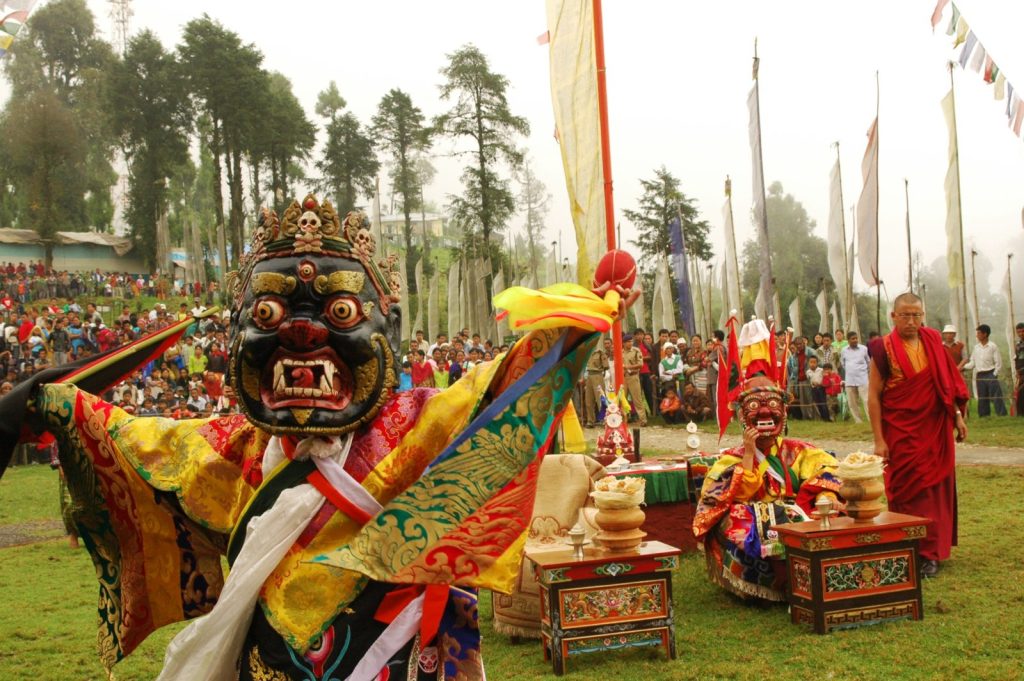
Festivals of Darjeeling and Sikkim It would help if you visited Darjeeling and Sikkim to witness the riot of the kaleidoscope of colours. Sikkim and Darjeeling are tucked away in the North-Eastern corridor of India in the shadows of the Himalayas. Sikkim is the second smallest state in India, while Darjeeling is part of West Bengal. The festivals here match in grandeur with all of India. An array of festivals is celebrated annually with rich, diverse cultures and traditions. However, you must plan a trip first to experience the celestial and colourful festivals. Here are some of the most celebrated festivals. 1. Saga Dawa: 26th May 2021 Saga Dawa is considered one of the most religious festivals in Sikkim and Darjeeling amongst the Mahayana Buddhists. The day begins with locals visiting monasteries and offering butter lamps as a token of their devotion. This festival celebrates the three occasions associated with the life of Shakyamuni Buddha. First, it is the birth, enlightenment, and achievement of Nirvana by Lord Buddha. Second, this celebration takes place on the full moon day of the fourth month of the Tibetan calendar, around the end of May and early June. 2. Drukpa Teshi: 14th July 2021 Drukpa Tseshi is celebrated with full zeal and splendour as this was the day Buddha gave his first sermon of four Noble Truths to his initial five devotees at a deer park in Sarnath. This day is celebrated on the fourth day (Teshi) of the Tibetan calendar’s 6th month (Drukpa), usually during July or August. It is one of the widely celebrated festivals in Gangtok, with mass prayers at Deer Park and Muguthang in North Sikkim. The day is then concluded with a Yak race, which highlights the celebration at Muguthang. 3. Pang Lhabsol: 2nd September 2021 Pang Lhasbsol is unique to Sikkim. It was made famous by Chakdor Namgyal, the third king of Sikkim. The festival involves worshipping Mount Kanchenjunga. It also marks the age-old blood brotherhood treaty signed between the Lepchas and Bhutias by KhyeBumsa, TetongTek, and the local gods/deities who witnessed the event. A masked monk depicts the guardian deity during this festival. While riding a snow lion, he is dressed in a bright red costume and a mask with a crown of five skulls. “Atchars” or jesters play pranks and antics on the spectators to lighten up the otherwise solemn ceremony. This occasion is celebrated on the fifteenth day of the seventh month, around the end of August. 4. Bumchu: 27th February 2021 The festival of Bumchu is observed in West Sikkim at the Tashiding Monastery in January. ‘Bum’ means ‘pot or vase,’ and ‘Chu’ means ‘water.’ The Lamas of the religious community open the pot that contains the Holy Water during the festival. Some of the holy water is distributed amongst the devotees gathered for the festival, and the pot is refilled with water and sealed to be utilized the following year. The water level in the container predicts the outcome of the year. If the water overflows, it means the coming year will be disturbing, and on the off chance the pot is dry, it implies a drought and starvation. 5. Kagyat Dance: 24th & 25th December 2021 Kagyat Dance is performed every 28th and 29th day of the tenth month of the Tibetan calendar. The monks in the Tsuklakhang Monastery usually perform this dance. The custom move finishes with the burning of effigies made of flour, wood, and paper, which symbolize the destruction of the evil powers of hatred. Before beginning this remarkable Buddhist religious festival, the monks usually offered Prayer at the beginning of this Buddhist festival. Then, they get together and pray for the prosperity of their community through the medium of dance. 6. Rumtek Chaam: 14th December 2021 Rumtek Monastery is renowned for its ‘Chaam’ – the traditional lama dance and the adapted ‘opera’ performed by the laypeople who live in the monastery’s vicinity. The vital ‘Chaam’ of Rumtek is completed two days before the Tibetan New Year and is shown on the tenth day of the fifth month of the Tibetan calendar. It is also known as ‘Tse Chu Chaam,’ these Chaams represent the eight different manifestations of Guru Padmasambhava, an Indian sage who spread Buddhism’s teachings in Tibet. 7. Losoong: 16th December 2021 The Sikkimese New Year is known as ‘Sonam Losar’ (the Farmer’s New Year). It is the event wherein the farmers’ cheer and celebrates their harvest. Losoong is celebrated among relatives and companions; the spirit of this delightful festival in Sikkim brings all people together for a common reason. Lama dances are held in almost all leading monasteries two days after Losoong. These dances are believed to expel the previous year’s wicked spirits and welcome the high spirits for the coming year. 8. Enchey Chaam: No dates available for 2021, probably due to COVID 19 The annual ‘Chaam’- a traditional dance performed by the Lamas of the Enchey religious community, is conducted each year on the eighteenth and nineteenth days of the Tibetan calendar’s eleventh month, usually in December. Like in all the Chaams in different parts of Sikkim, this Buddhist religious festival in Sikkim watches the Lamas in their fabulous outfits and perform the divine dance with each other. However, in Enchey, the Drag-dMarChaam of Padmasambhava is believed to be in his most wrathful form! 9. Loshar: 12th – 14th February 2021 Loshar is the Tibetan New Year and is celebrated by welcoming neighbours, companions, and relatives to social events. A few days preceding Losar is the Guthor Chaam, where beautiful lama dances are held in the Pemayangtse and Rumtek Monasteries to welcome the Tibetan New Year. The Hindus of Nepalese origin celebrate various Hindu festivals like in Nepal. Check out our Trekking packages for Nepal, Bhutan, India, and Tibet.
Festivals of Tibet
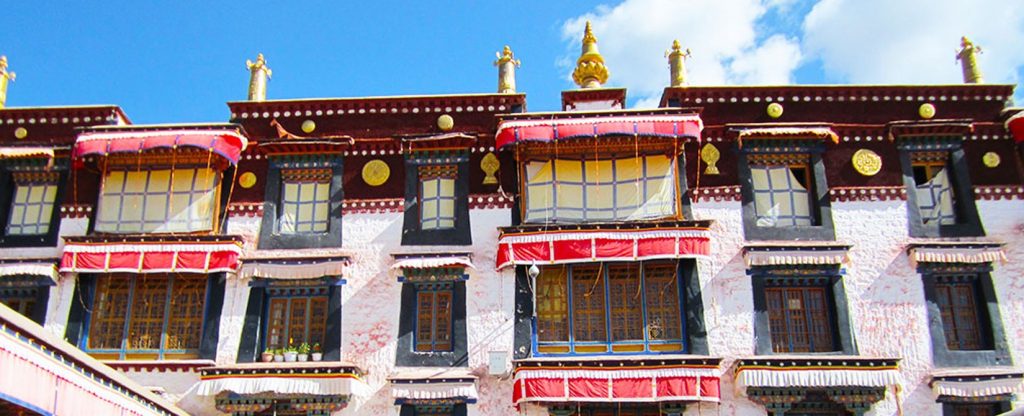
Festivals In Tibet Many grand and vibrant Tibetan festivals make up our Lhasa festivals and events list. The highlights are The Tibetan New Year, the Shoton Festival, and the Thangka Festival, when a giant Buddha painting is unfurled. Other festivals are associated with Buddhist monasteries and local traditions and customs. Lhasa is the centre of all things Tibetan, so a Lhasa tour, especially one including a minority festival, would be ideal for experiencing Tibet’s culture. Here are some of the famous festivals in Tibet. Loshar (New Year) 12th – 14th February 2021 25th – 27th February 2020 5th – 7th February 2019 It is the largest Tibetan festival celebrated by all. It starts on the 1st day of the 1st month of the Tibetan Calendar. It is observed for 3 to 15 days. On the eve of the New Year, the Tibetans eat Guthuk – a specially prepared noodle soup with their family. Saka Dawa 26th May 2021 This festival honours the Shakyamuni Buddha’s birth, enlightenment, and Nirvana. This takes place in the 4th month of the Tibetan calendar. One’s good deed is considered to multiply during this period, so Tibetans gave alms to beggars and became vegetarians—those who could make a pilgrimage to Mount Kailash in West Tibet. Zamling Chisang 24th June 2021 It is considered a universal prayer day in Central Tibet. Tibetans go to nearby mountains to hang prayer flags and burn incense on the 15thday of the fifth month of their calendar. The Dalai Lama’s birthday 6th July 2021 Tibetans celebrate His Holiness’s birthday everywhere with prayers for long life, picnics, and cultural programs. It always falls on 6th July. Choekar Duechen 15th July 2021 This day is to honour Shakyamuni Buddha’s first sermon on the four noble truths in Sarnath, India. It was the day when the wheel of Dharma was first turned. Drukpa Tse Shi is another local name; it means the 4th day of the 6th Shoton or Sho Dun (Yogurt) festival. 16th – 22nd August 2021 This festival is celebrated with enthusiasm at Drepung Monastery in Lhasa. An enormous Thangka is displayed on the hill next to the monastery. Thousands gather to see it and pray before going on a picnic and watching Tibetan opera at the Norbulingka Palace grounds. The celebration begins on the 29th day of the 6th month, and there is a ritual dance at Drepung Monastery. It goes on for ten days during the summer. Lha-Bab Duchen 27th October 2021 It is a day of prayer to honour Buddha’s descent from the heavenly realm to earth. This is celebrated on the 22nd day of the 9th month on the Tibetan Calendar. Ganden Ngachu. 29th December 2021 This is the death anniversary of Tsongkhapa, founder of the Gelukpa school of Tibetan Buddhism. Tibetans light butter lamps to make offerings both at home and in monasteries. It takes on the 25th day of the 10th month of the Tibetan Calendar. Check out our Trekking packages for Nepal, Bhutan, India, and Tibet.
Vivaha Panchami Festival in Nepal
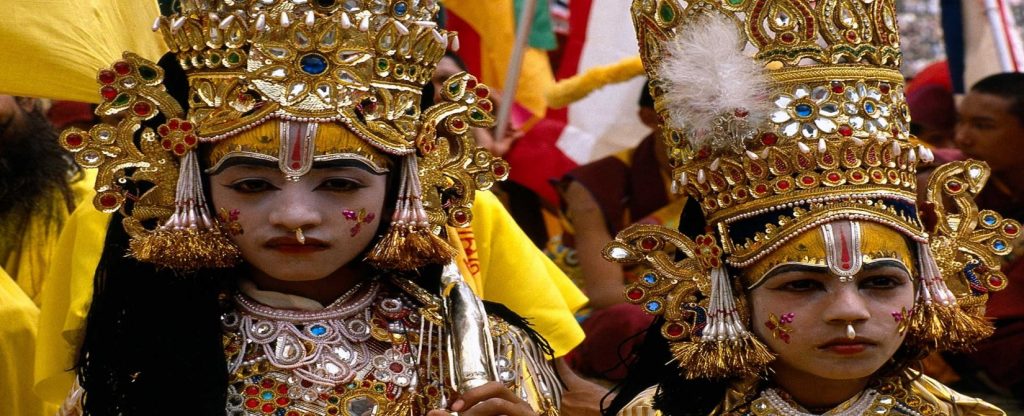
Vivaha Panchami Festival in Nepal 8th December 2021 18th December 2020 1st December 2019 12th December 2018 Vivaha Panchami is a celebration to commemorate the eternal marriage of Lor Ram (The prince of Ayodhya) and Princess Sita of Janakpur in the form of an auspicious Hindu festival. It is observed during the fifth day of Shukla Paksha – the bright fortnight during the month of Mangshir on the Hindu calendar. This festival usually takes place on the Gregorian calendar in late November or early December. This festival is celebrated mainly in Northern India, Mithilanchal, and parts of Nepal. According to the Hindu epic Ramayana, King Janak of Mithila, now known as Janakpur, organised a “Swayambar” ceremony. He invited many kings from various kingdoms to choose a suitable groom from the attendees for his daughter Sita. The potential groom’s condition was to lift Shiva’s Bow (Dhanush) and string it to be selected to marry Sita. Thousands of Kings and Princes tried to do the feat, but most failed and could not move it a bit. Finally, along came Ram, the prince of Ayodhya, who managed to lift this large and heavy bow of Shiva and strung it. The vibrant burst into applause, and flowers rained from the heavens. Hence, Princess Sita was married off to Lord Ram. People have celebrated Vivaha Panchami with tremendous dedication to immortalising Lord Ram and Devi Sita’s wedding ceremony. Vivaha Panchami Ceremony Vivaha Panchami is celebrated with great zeal and ardour in Ayodhya, the birthplace of Lord Ram. On this day, the numerous ancient temples are adorned with flowers and light. A marvellous wedding procession takes place. It passes by the countless ancient temples during the day. The wedding ceremony is concluded with the idols that symbolise Ram and Sita. Millions of Hindus witness this momentous event from all over India and the world. The devotees sing devotional songs and chants from the Ramayana epic. Elaborate rites are conducted in the temples with the statues of Ram and Sita. Many devotees from Mithila get dressed in their ancestral attire and go to Ayodhya to perform on the stage. This magnificent event is known as Ram Vivah Utsav. Many cultural shows and stage performances are also commonly organised for this occasion by various communities other than the festivities at the temples. Ramleela depicts the lives of Lord Ram and Sita are observed with great enthusiasm. Male actors enact both the male and female roles of the epic Ramayana. Ayodhya becomes exciting and colourful with the numerous tourists, pilgrims, and locals performing various rituals. This festival also symbolises the high bond and association between India and Nepal. It is prevalent in the historical and spiritual city of Janakpur in Nepal. The best time to visit Janakpur is during Vivaha Panchami’s festival to observe the ancient culture and traditional values. The Vivaha Panchami observance takes place at the Janaki Temple for seven days. The entire Janaki temple is adorned and highlighted as a “Mandap” (a sacred tent used for Hindu weddings) during this time. Ram and Sita’s statues are brought to the Mandap, and they are cosmeticised as bride and groom with traditional wedding attire and jewellery. Lord Ram and Sita’s holy matrimony ritual takes place with great zeal with chanting and singing devotional songs to worship the idols. Delightful traditional food is served to the ordinary people as part of the many temples’ holy meals. Janakpur comes to life during this festival, and it is jam-packed with Hindu pilgrims and tourists alike. Check out our Trekking packages for Nepal, Bhutan, India, and Tibet.
Naag Panchami Festival in Nepal
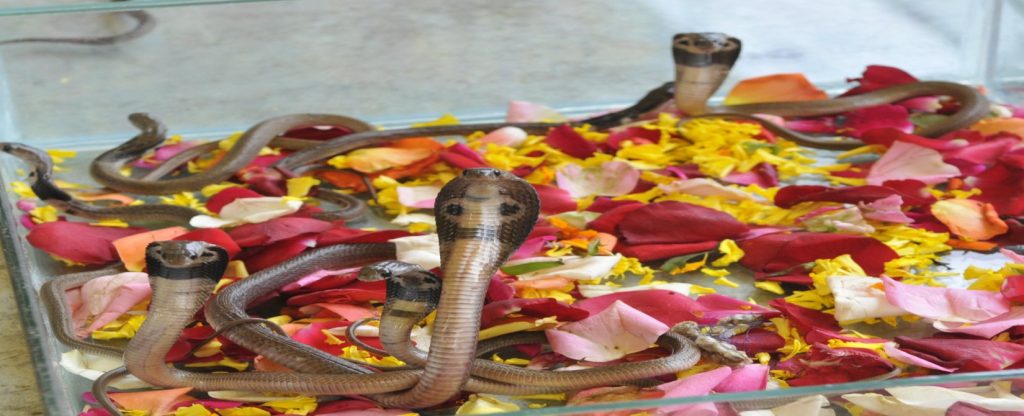
Naag Panchami – Festival in Nepal 13th August 2021 25th July 2020 Naag Panchami festival of Nepal 5th August 2019 What is Naag Panchami? It is the day of serpents. Naags are revered on this day in Nepal. Naag means snake, and Panchami is the fifth day after the new moon, where the name for this festival derives from. The new moon day is known as Aunshi locally. What is Naag? Naags are divine snakes with mysterious powers. These snakes have an original part in Hindu convictions. The Mahabharata epic mentions that Lord Krishna defeated Naag Kalia and ended his evil deeds on this day – Shrawan Panchami. This is the reason the Hindus celebrate this festival. Legend has it that Kathmandu valley was a vast lake. Naags were angered when humans drained it to live there. So the people dedicated certain areas to worship the Naags to appease their anger and for self-protection. They also promised to dedicate this day to worship them to live in harmony; this is still practised to date. There were eight Naags with exceptional capabilities, and are widely worshipped. The mantra for Naag Panchami is printed on the bottom of the posters posted on Hindu households’ doors. How is this festival celebrated in Nepal? The Hindus of Nepal stick pictures of Naags on the top middle part of the doors on this day to keep evil spirits out. They worship the Naag by offering starchy water from washing rice; this water represents milk. Some people even provide milk at the snake holes on this day. People make an effigy of a snake with a cotton string plastered with cow dung and rice flour plaster and offer it cow milk, barley, sesame seeds, mixed nuts, and other sacred objects. It is strongly believed that Naags provide believers with good health, prosperity, and blessings for the year when Naag Panchami is observed well annually. The Nepalese Hindus believe that if the Naags are infuriated, they can make them gravely ill. The Puran (a genre of ancient Indian literature) states that Shesh Naag hoists the earth on its head. Lord Vishnu sleeps on its coil inside the ocean. The most powerful Naags are Kali, Bashuki, Astha, Padma, and Karkot. Ancient scriptures reveal that there would be no rain without the assistance of Naags. This is one more reason for the Nepalese Hindus to offer benedictions while offering food items such as milk and honey in the fields with the hope of sufficient rain. Several men donning demonic masks dance on the streets as a part of the Naag Panchami ceremony. The Nepalese Hindus have their myths and legends encompassing Naags, which leads them to observe Naag Panchami on a grand scale. Check out our Trekking packages for Nepal, Bhutan, India, and Tibet.
Krishna Janmasthami Festival in Nepal
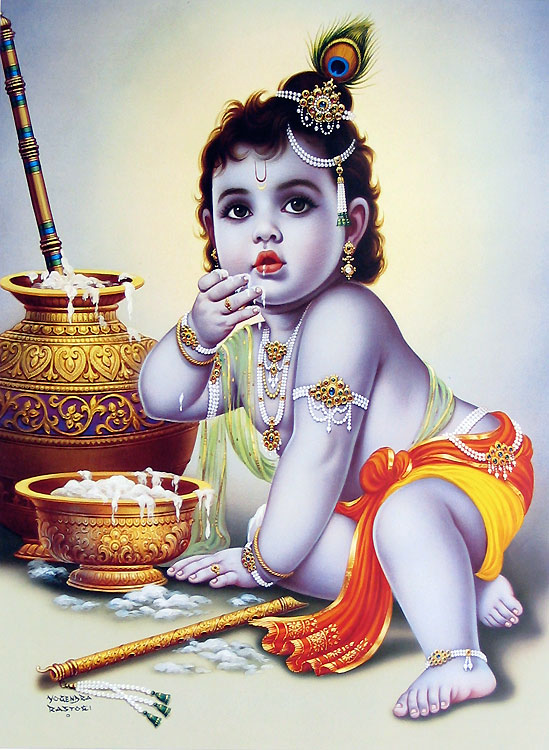
Krishna Janmashtami – Festival in Nepal Krishna Janmashtami -30th August 2021 Krishna Janmashtami -11th August 2020 Krishna Janmashtami 2019 – 24th August 2019 Krishna Janmashtami is the commemoration of the birth of Lord Krishna. It is also known as Janmashtami, and this occasion is celebrated with great enthusiasm. This vital day falls on the eighth day or Ashtami of the Krishna Paksh or the dark fortnight of the lunar month of Bhadau. No one knows precisely when this festival originated. Perhaps a thousand years back, this celebration found its space in the Hindu culture. One could come across numerous legendary tales and fables that encircle the birth of Janmashtami. The most widely believed view is that Lord Krishna is the eighth incarnation of Lord Vishnu or the Hindu trinity. The Hindus know from the Mahabharata epic that Lord Krishna’s birth destroyed the demon Kangsa who also happened to be his maternal uncle. It is stated that Lord Vishnu comes to save humanity from the hands of demons and evil whenever an imbalance develops in the universe regarding peace and prosperity. Scholars and Historians say that Lord Krishna was given birth in a cellular prison during the Dvapara Yuga to Vasudeva and Devaki. However, Vasudeva had to cross the Yamuna river on a stormy night to pass on his child to a friend to protect the child from the evil hands of Kangsa. Thus, Maiya Yasodha and Nanda of the Gokul region in Mathura became the foster parents of Lord Krishna. Lord Krishna was a fascinating child, and his talents were noticeable right from childhood. So the people started considering that this small boy named Krishna was sent amongst the commoners to protect them in all tumultuous circumstances. It can be said that this festival originated in Gokul initially, covering the Mathura region and later on spreading throughout the state of Uttar Pradesh. Furthermore, after thousands of years, the nation celebrates Lord Krishna’s birth as he represents faith, friendship, love, and peace. Reasons for the celebration? The story of Mahabharata has much to do with the life of Lord Krishna. Throughout the righteous war, locally known as Dharma Yuddha between the Kauravas and Pandavas, Lord Krishna was the charioteer for Arjuna. He advised Arjuna on several life sections, such as Dharma (the righteous path), Karma (actions), Theistic dedication, Yogic paragons, liberation, knowledge, etcetera. Arjuna was in emotional turmoil after having to kill his fellow brothers and cousins. The verses quoted in this book are frequently called either a spiritual dictionary or a righteous life guide. Lord Krishna declared that whenever there is a prominence of evil deeds in this universe, he would reincarnate in various forms and attire to display the path of righteousness and peace to the people. The main reason for this celebration is to unite people and strengthen the principles of unity. Dahi Handi is another essential aspect of this celebration. It is observed on the second day of Janmasthami. As a child, Lord Krishna was named ‘Makhanchor,’ the one who steals butter. He went around every household in Gokul, stealing butter. Dahi handi is an event that depicts the same butter stealing action of Lord Krishna gets narrated. An earthen pot known as handi is filled with ghee or clarified butter, butter, milk, and dry fruits. It is then suspended at a substantial height with the help of ropes. Finally, all the young local guys gather to make a human pyramid and climb on top of each other to reach the earthen pot and break it. This is one activity that is intended to teach the principles of teamwork. Check out our Trekking packages for Nepal, Bhutan, India, and Tibet.
Indra Jatra Festival in Nepal
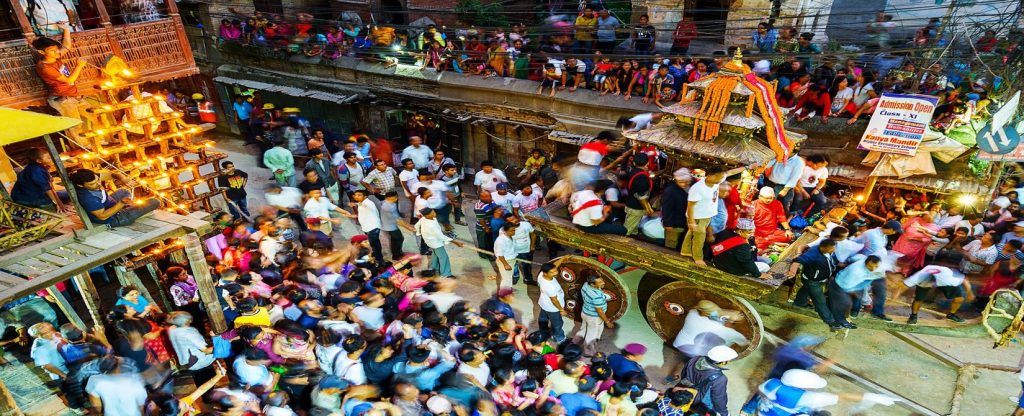
Festival in Nepal – Indra Jatra 22nd August 2021 1st September 13th September 2019 Indra is considered the Lord of Rain and the King of heaven. Jatra means procession in Nepali. Indra Jatra is a day to celebrate him. This festival takes place in Kathmandu, the capital of Nepal. Some say this is a day to thank Lord Indra for the rain during the monsoon. While according to others, this festival is to honour Bhairav, another manifestation of Shiva, in a destructive form. When is Indra Jatra celebrated? It is a festival that goes on for eight days. It begins from the day of Bhadra Dwadasi to Ashwin Chaturdasi on the lunar calendar annually. How is Indra Jatra observed? The celebration starts with a carnival-like atmosphere. A ceremonial pole is known as the Yasingh Linga, accompanied by the rare presentation of Akash Bhairav, which is depicted with a large mask that spouts Jaar and rakshi (local liquors). Newari and other families display images and figures of Indra and Bhairav. The Yasingh Linga is a thirty-six-foot high wooden pole chosen carefully from the Nala forest of Kavre district east of Kathmandu. According to the local faith, Indra received this flag for protection from Lord Vishnu. Eventually, the living goddess – Kumari leaves the sanctity of her temple in a palanquin, leading a procession through the streets of Kathmandu t thank the rain god, Indra. The festival’s main highlight is the parade of masked dancers who represent the deities along with demons and chariots. The Newari name for Indra is Yanya. Another remarkable thing to witness is the local liquor known as jaad flowing from the statue of Bhairav. This occurs at the Hanuman Dhoka, a part of Bansantapur, Nepal’s 10 World Heritage sites. The procession consists of: • Ganesh (Chariot) • Kumar (Chariot) • Kumari (Chariot) • Majipa Lakhey • Sawan Bhaku • Pulukishi Additionally, various dances are held on the open stages called dabu in the city. The statue of Swet Bhairav and other deities of the Basantpur Durbar Square are displayed.










